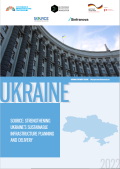This case study provides an updated overview of the European electricity sector transition, focusing on key topics like the growth in renewables, conventional power generation, electricity consumption, and CO2 emissions. The case study also provides an overview of 2018 electricity consumption, generation, and emissions by country, with downloadable data for emissions by country to enable others to also perform up-to-date analysis. Key findings include:
- CO2 emissions in the power sector fell by 5 percent in 2018. Half of this was structural, from new wind, solar and biomass displacing hard coal. The other half was weather-related, as increased hydro generation reversed the temporary rise in gas in 2017. Overall EU emissions trading system (EU ETS) emissions fell by 3 percent between 2017 and 2018.
- Europe’s transition from hard coal to renewables is accelerating. Hard coal generation fell by 9 percent in 2018 and is now 40 percent lower than in 2012. In 2018, Germany and Spain announced that coal phase-out plans were imminent. That would put three-quarters of Europe’s 2018 hard coal generation under national coal phase-outs.
- However, the transition from lignite (the dirtier, brown coal) to renewables is proving much more difficult. Lignite generation fell by only 3 percent in 2018. Half of Europe’s lignite generation was in Germany; the Coal Commission announcement for a 2038 phase-out includes lignite. The other half is in countries where this is not yet the case: Poland, Czech Republic, Bulgaria, Greece, Romania, and Slovenia.
- Wind is strong, but solar is projected to grow rapidly. Overall, renewables rose to 32 percent of EU electricity production in 2018, mainly due to growth in wind power and hydro returning back to normal. In addition, solar increased by more than 60 percent in 2018, as module prices fell by 29 percent, and could triple by 2022. Solar also outperformed other energy sources during the 2018 summer heatwave.
- For the first time, the fuel and carbon costs alone for coal and gas plants were on par with the full cost of wind and solar. In 2018, coal price rose 15 percent, gas rose 30 percent, and the CO2 price rose 170 percent. Consequently, electricity prices rose, reaching the level at which the latest wind and solar auctions cleared in Germany.




